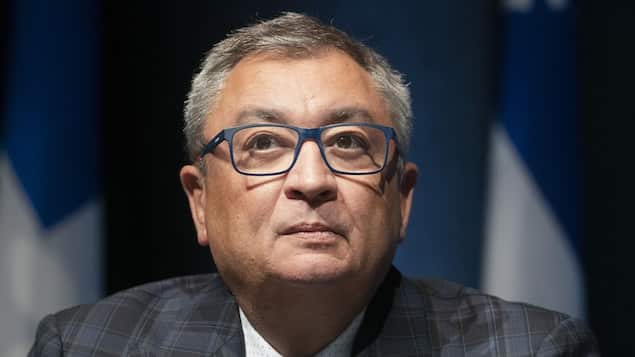It all took place as part of the unveiling of the biomonitoring study in Rouyn-Noranda which showed that young children living near the Horne Foundry, owned by Glencore, had four times more arsenic in their bodies. than those elsewhere, on average.
Horacio Arruda came to meet the citizens of the sector during the presentation of the results. During the same day, he met with Glencore Fonderie Horne, the City of Rouyn-Noranda, the Ministry of the Environment and the ARET citizen committee.
Dr. Arruda specified during his meeting with the committee responsible for monitoring the study that the company had already said that the Quebec standard of 3 nanograms per cubic meter in the air will never be reached, but that it was possible to establish an intermediate target.
The neighborhood citizens’ committee finds it hard to understand why the national director of public health had met with the company. He also says he feels abandoned by the government.
” We haven’t answered our letters and we have the impression that they want to hide things from us »
François Legault was reassuring
A statement by Prime Minister François Legault, shortly after Dr. Arruda had this appendix withdrawn, raises questions. In interview broadcast on November 7, 2019, a little over a month after this event, Mr. Legault maintained that there was no evidence that arsenic could have an impact on the rate of cancer within the population.
So, in light of what the Prime Minister mentioned, one might think that he was never aware of this appendix in question or that he chose to ignore it, since the environmental health experts that Radio- Canada questioned assure us that there is no doubt, looking at this document, that the company could have played a role in the increase in lung cancer in Rouyn-Noranda.
The authors pointed out in appendix 6, the one that has not been disclosed to the public, that arsenic is a carcinogen and that the association of atmospheric pollution with the excess of respiratory diseases observed in Rouyn-Noranda could not be discarded.
The ARET committee installs its own stations
In addition, the Stop Toxic Waste and Emissions Committee (ARET) will install its own measurement stations for fine arsenic particles in Rouyn-Noranda.
This committee, made up in particular of citizens from the Notre-Dame district, wants to know more about the presence of particles in the other districts of the city.
The organization believes that the Quebec government is not doing enough to document the phenomenon of the presence of metals in the air.
“That’s what we’ve been doing since the beginning. We try to find solutions to take ourselves in hand, since we don’t really feel listened to or supported. They don’t want to give us information about the exhibition elsewhere in town, so we found this way to do it. We looked for a lot of health data, there are some that have come out, but we are continuing our research to see if there are other health problems, ”says Mireille Vincelette.
The data will be accessible to everyone on the internet.
Minister Fitzgibbon ready to accompany the foundry
For his part, the Minister of the Economy, Pierre Fitzgibbon, says he is ready to support the Horne Foundry in respecting environmental standards.
Asked about the subject during his visit to Val-d’Or, the Minister mentioned that companies also wanted to have a greener image. He affirms that the role of his ministry is to support companies in their sanitation projects.
Of course, these are significant investment amounts. What they are trying to do is to combine investment for climate change and adherence to environmental standards, and at the same time have profitable projects. The role of the Ministry of the Economy is to work with them. Me, I opened the door, bluntly to say, if you have a project that will make it possible to respect environmental standards, it’s non-negotiable, we should be there to help you because I think it’s a project important for the Rouyn-Noranda region
said Mr. Fitzgibbon.
With information from Jean-Marc Belzile
Reference-ici.radio-canada.ca
